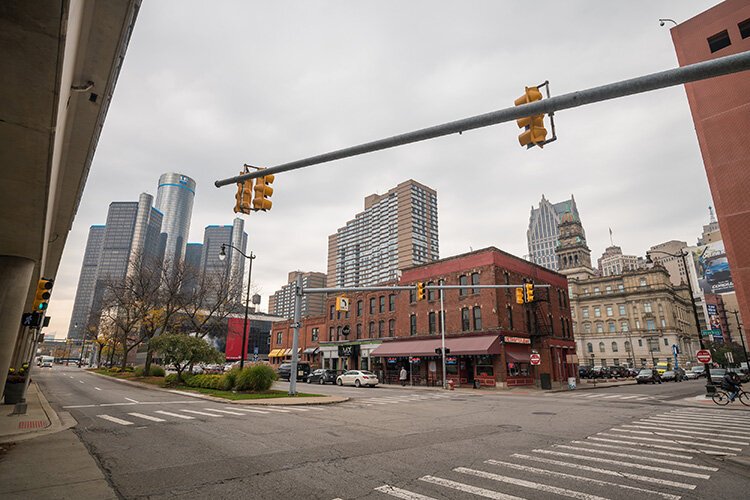City of Detroit seeks community input as it develops ‘Streets for People’ transportation plan
Detroit ranks among the top five big cities in the country in traffic fatalities, so the city has launched its Streets for People campaign, placing an emphasis on safety as it develops its next transportation plan.

According to a new public awareness campaign from the City of Detroit, more than 300 pedestrians are hit by cars each year in the city. It’s the type of statistic that the city has begun displaying on billboards and buses.
It’s a troubling statistic to advertise. A grim message — and an urgent one.
“Detroit ranks among the top five big cities in the country in traffic fatalities. So we know that we have a problem,” says Caitlin Malloy-Marcon, deputy director of Complete Streets for the city’s Department of Public Works.
That’s why the city has launched its Streets for People campaign, placing an emphasis on safety as it develops its next transportation plan.
The planning process, which launched in October and should be completed 12 months later, will inform transportation projects for the next decade or longer.
“We want to look at how we use our streets today, how to better use them in the future, and set a design framework to make that possible. There’s also the safety campaign and we want to look at how design affects safety,” Malloy-Marcon says.
“It’s very hard to take on projects in the transportation network without thinking holistically. Projects shouldn’t happen in a vacuum or in short segments.”
The city has purchased ads to be placed on buses and billboards, encouraging drivers to consider issues like pedestrian safety. And in September, the city announced that 4,500-speed cushions will be installed on city residential streets in 2021, nearly four times more than this year’s total of 1,200 installed.
The Streets for People plan will utilize community input to help inform the planning process. A short survey is online now and through the new year, asking residents to complete a simple sentence to help planners identify what’s important to Detroiters: “I would like streets with [Blank] for people who [Blank].”
An example given is, “I would like streets with slower traffic for people who bike with their friends to school.”
More intensive community input sessions, including workshops and public forums, are planned for spring 2021.
“In Detroit, 65% of our public open space is our public roadway network. That should be a space that works for as many people as it can,” Malloy-Marcon says.
“The transportation master plan is made to look 10 to 15 years into the future. It’s a roadmap to the future, if you can pardon the pun. This is to help us make better decisions in the neighborhoods that we’re working in.”
The Streets for People survey is available online.
Got a development news story to share? Email MJ Galbraith here or send him a tweet @mikegalbraith.



